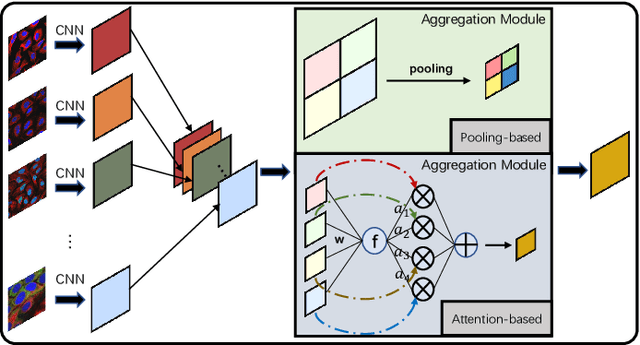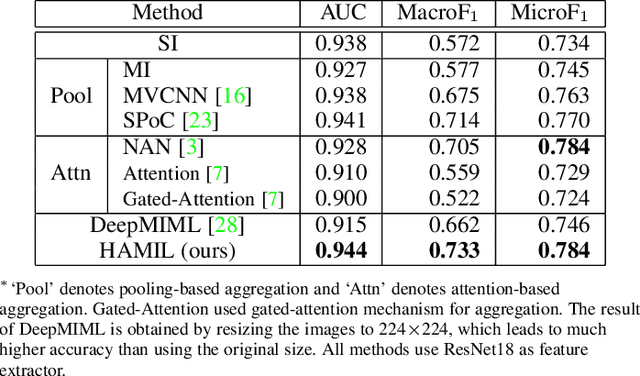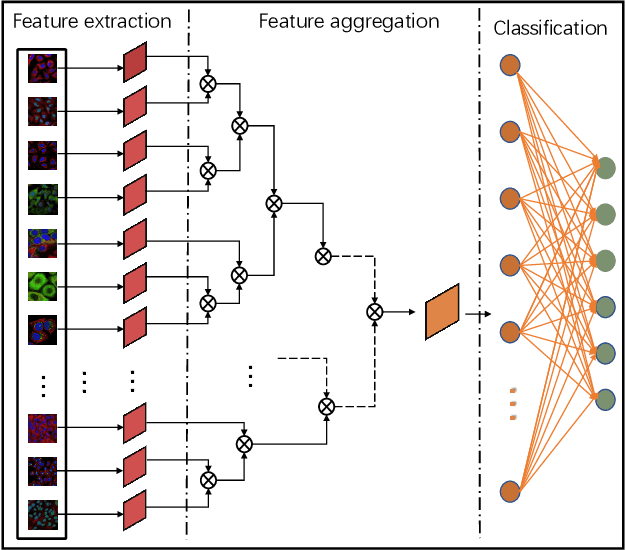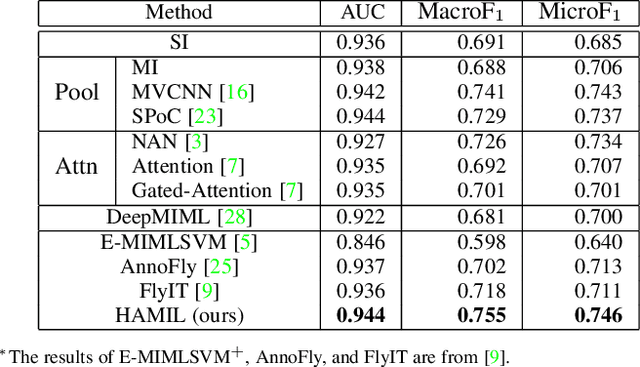HAMIL: Hierarchical Aggregation-Based Multi-Instance Learning for Microscopy Image Classification
Paper and Code
Mar 17, 2021



Multi-instance learning is common for computer vision tasks, especially in biomedical image processing. Traditional methods for multi-instance learning focus on designing feature aggregation methods and multi-instance classifiers, where the aggregation operation is performed either in feature extraction or learning phase. As deep neural networks (DNNs) achieve great success in image processing via automatic feature learning, certain feature aggregation mechanisms need to be incorporated into common DNN architecture for multi-instance learning. Moreover, flexibility and reliability are crucial considerations to deal with varying quality and number of instances. In this study, we propose a hierarchical aggregation network for multi-instance learning, called HAMIL. The hierarchical aggregation protocol enables feature fusion in a defined order, and the simple convolutional aggregation units lead to an efficient and flexible architecture. We assess the model performance on two microscopy image classification tasks, namely protein subcellular localization using immunofluorescence images and gene annotation using spatial gene expression images. The experimental results show that HAMIL outperforms the state-of-the-art feature aggregation methods and the existing models for addressing these two tasks. The visualization analyses also demonstrate the ability of HAMIL to focus on high-quality instances.
 Add to Chrome
Add to Chrome Add to Firefox
Add to Firefox Add to Edge
Add to Edge